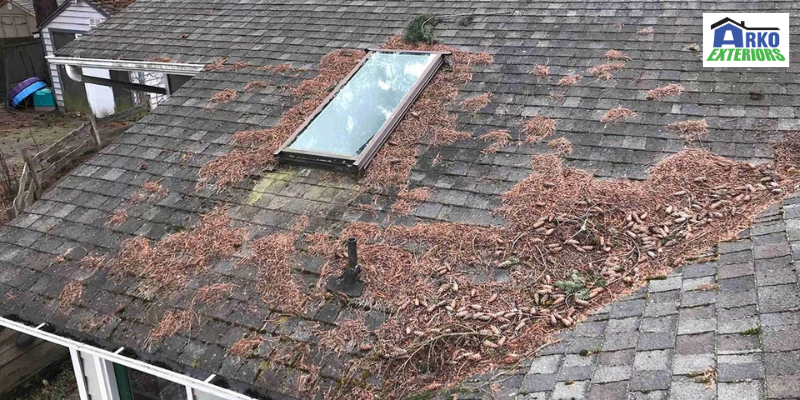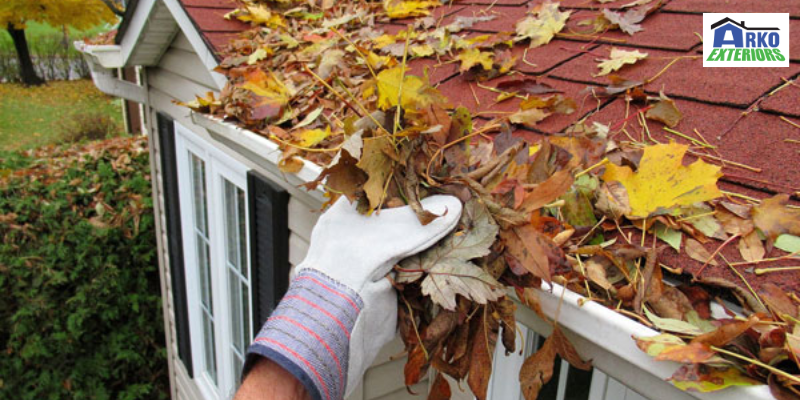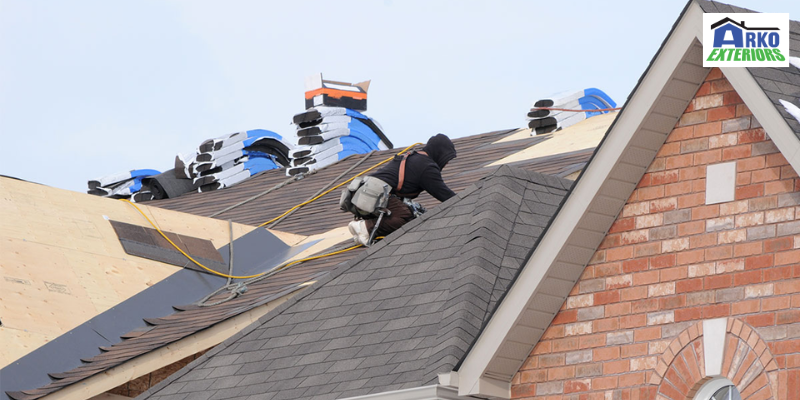It is not difficult to prepare your home for the winter months, but it does require some preparation. Most people forget about this and then they experience problems in January, February or March when the weather is cold and snowy.
The roof, like all other sections of the house, requires regular examination and maintenance to ensure that it can resist harsh weather during the cold months and operate at peak performance.
Was your roof prepared for a Minnesota winter? What are some things you should have done? Here they are…
#1 Remove debris

Throughout the year, dirt, dust and debris accumulate on your roof. Debris includes seeds, grass, twigs, leaves and small tree branches.
If debris is left on top of the roof during the fall and winter seasons, it will begin to accumulate moisture and, over time, will put your house in danger of mold, algae growth and rotting. You don’t want debris lingering on your roof. Did you remove it before winter set in?
#2 Maintain gutters

Leaves frequently pile in gutters, clogging the most important way for your roof to drain securely.
If you don’t clean out your gutters before the fall and winter, there could be obstructions in the downspouts, which could cause rain to overflow onto your roof and leak under the shingles, resulting in moisture damage.
The added weight from the moist leaves may also cause gutter damage by bending them. Did you spend time cleaning out your roof’s gutters in October or November?
#3 Examine the attic air flow
Proper attic ventilation is critical to maintaining the best possible condition of your roof.
A poorly ventilated attic may decrease the life of the roof by effectively frying it from the inside and outside.
Examine your attic insulation and replace or add more if it appears brittle or torn. If you notice bald spots, cover them up and replace the insulation.
#4 Trim any overhanging branches
Did you check to see if any branches are overhanging your roof, especially if your property is surrounded by trees or has trees nearby?
During the autumn season, the leaves from the trees may begin to fall to the roof and collect, causing damage to the gutters and the roof itself. Branches might also fall down on the roof, especially during windy winter storms.
#5 Arrange for a professional inspection
Anytime of the year you can request that a roofing professional evaluate your roof for any roof damage, such as cracked, frayed, curled or missing shingles. Professionals have the necessary tools and skills to do the assessment and, if necessary, repair or replace your roof.
#6 Examine the roofline
When preparing your roof for winter, the first thing you should do is inspect the roofline. Because your roof lines should be straight, any symptoms of dipping, curving or sagging should be investigated.
A sagging roofline might be caused by framing faults or a decaying wood roof deck that has become soaked.
Roofs are exposed to severe rain and snowfall throughout the winter season, which can stress the roof, increase drooping and possibly lead to a cave-in. A sagging roof isn’t necessarily a reason for concern and is most likely structurally sound. However, if it is accompanied by a leak or other indicators of deterioration, it may necessitate repair.
Did you check your roofline over the past few months?
#7 Examine the chimney flashing for leaks
Chimney flashing is the metal strip that connects the chimney to your roof and is one of the most typical places for roof leaks; Leaky flashing is frequently mistaken for a leaking roof.
Check to see whether your flashing is loose or damaged and if the caulk that holds it in place hasn’t split or degraded. Check for any evidence of water incursion near the chimney as well. Have you done this lately?
#8 Examine the attic for evidence of water damage
After inspecting your chimney, proceed to your attic, as the earliest indicators of a leaky roof can often be found there.
Watermarks on the walls, damp roof decking and puddles of water on the attic floor are all signs of a leak.
Summary:
Winterizing your roof is an important step, but it does not guarantee that it will not be harmed by snow and ice throughout the winter.
Keep an eye out for symptoms of roof damage, especially after strong storms, so you can address problems as soon as possible and avoid the need for more costly repairs later.
If you want the services of a professional roofing business this winter, we would be delighted to assist you. Our skilled roofers are highly qualified and trained to identify and repair all types of roof damage. Schedule your free estimate now; Call Arko Exteriors at 763-434-2756 for more information.

